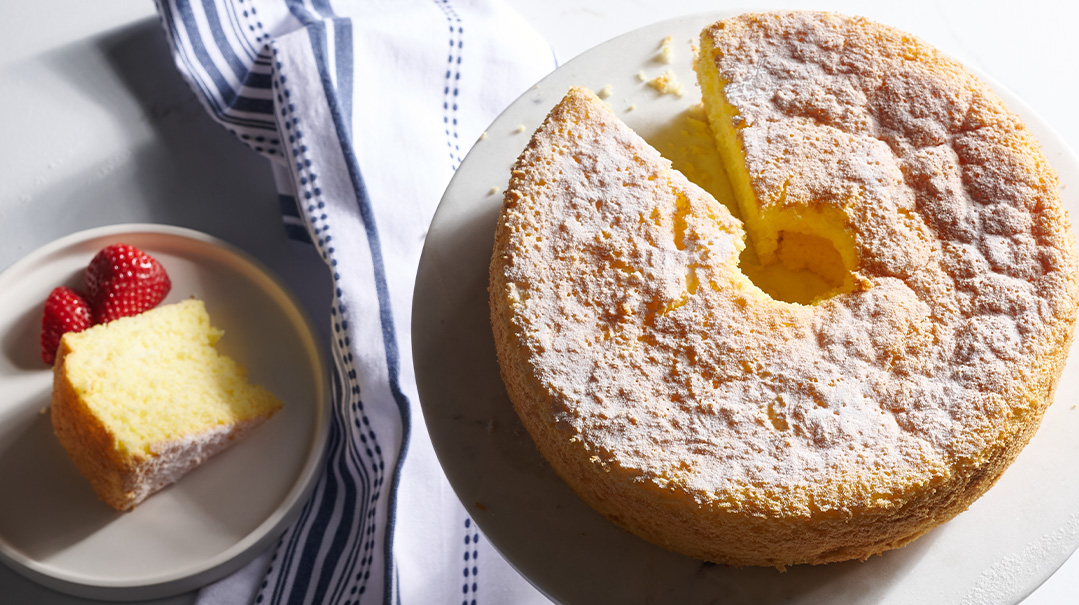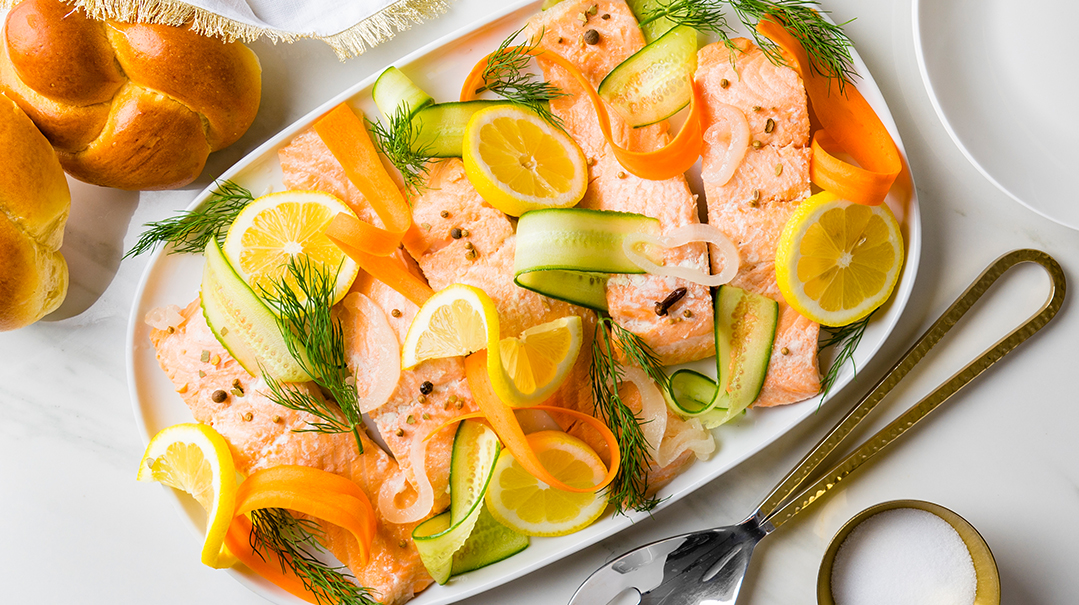A Litvish Shabbos: Beautiful Simplicity
| March 15, 2022
Photo Credit: Sina Mizrahi
Rebbetzin Esther Levin
Wife of Rav Avraham Chaim Levin of Telshe Chicago, zt"l, and daughter of
Rav Ephraim Mordechai and Zlata Malkoh Ginsburg, of Yeshivas Mir in America
My conversation with Rebbetzin Esther Levin was a delightfully navigated trip back in time. Having grown up in Detroit under the guidance of Rav Leizer Levin and feeling the impact of this family throughout my formative years, speaking to his daughter-in-law and hearing about her background filled in more of the picture of this incredibly pure and Torah-oriented, yet down-to-earth family.
Esther Ginsburg was born in Mir, Poland, to Rav Ephraim Mordechai and Zlata Malkoh Ginsburg, the late Rosh Yeshivah and Rebbetzin of Yeshivas Mir in America. Her maternal grandfather was HaRav Yechezkel Levenstein, Mashgiach of Yeshivas Mir in Poland and, in later years, of Yeshivas Ponovezh in Bnei Brak.
Rebbetzin Levin remembers her childhood fondly. “We are Litvish, from Lithuania — simple, kindhearted, good-
natured, and very focused on Torah learning. The country we lived in was very poor, and so were the Jews living in it.
“My mother was a homemaker — she did 95 percent of the preparations for Shabbos herself, and being an old-fashioned balabusta, she did almost everything on Friday so the food would be fresh. Most people in those days didn’t have freezers — we were lucky to have a fridge, and not just an icebox.”
The evening Shabbos meal consisted of gefilte fish, chicken soup with lokshen, a small piece of chicken, potato or lokshen kugel, sweet carrot tzimmes, and fresh or cooked fruit for dessert. On Shabbos day Rebbetzin Ginsburg served liver, cholent, a small piece of chicken, and a simple dessert. “The food was plated,” recalls Rebbetzin Levin. “Whatever was on your plate was your portion of food, and that’s what you ate.”
In January of 1947, after spending the war years in Shanghai, the Ginsburg family arrived in the United States as refugees. “We had almost nothing, but we didn’t feel poor. We had the warmth of family,” Rebbetzin Levin recalls. The Ginsburgs started out in East New York and then moved to Flatbush.
“I belonged to the Young Israel, and we had groups during elementary school. When we lived in Flatbush, there were no other frum people living there. In the winter months, we read a lot on Shabbos. When I was in high school, balabatim started moving to Flatbush and a Bnos was formed, so I was a Bnos leader for two years.”
Early Years in Telshe Chicago
In the late 1950s, Esther Ginsburg married Rabbi Avraham Chaim Levin from Detroit, the son of Rav Leizer and Rebbetzin Sarah Menucha Levin, zt”l. In 1960, Rav Mottel Katz of Telshe Cleveland sent Rav Levin, his prized student, to Chicago to start a branch of the Telshe Yeshivah.
“In those days in Chicago, there was no eiruv. On Shabbos I couldn’t go anywhere — if you had babies, you stayed home.”
Rebbetzin Levin shopped for Shabbos on Wednesday, and cooked on Thursday and Friday. “We always had company,” she says. “Guests set a tone at the Shabbos table, and we always liked to have people over.”
When the Levins first started Telshe Chicago, the bochurim were farmed out for Shabbos meals to save the yeshivah money. The rabbanim and the balabatim, including the Rosh Yeshiva and Rebbetzin, hosted bochurim every Shabbos.
Rav Levin would bentsh all of the children Friday night, and the family sat for all of Kiddush, following the minhag of the Vilna Gaon. Rebbetzin Levin’s Friday night meal was very traditional, with gefilte fish or boiled white fish, and, on special occasions, pickled salmon or trout. There was always chicken soup with lokshen, and knaidlach for Yom Tov.
“The chicken for Shabbos was always the same,” Rebbetzin Levin shares, “breaded and baked. Our boys liked potatoes, so I made potato kugel with five pounds of potatoes, and another five pounds of potatoes went into the cholent! Shabbos morning I served liver or eggs, a huge pot of cholent with kishka, and baked apples or ice cream for dessert. On Erev Yom Kippur, Hoshana Rabbah, and Purim, I always made kreplach.”
Maintaining the Focus
“One important thing I want to tell you,” says the Rebbetzin, “is that we never discussed the food at our Shabbos table. It’s not that it was taboo, like lashon hora, we just had more important things to do. It was ungenumen — the kids knew not to say, ‘I don’t like how the cholent came out this week.’
“The men sang zemiros, told over one or two divrei Torah, and we were done with the meal in an hour or an hour and a half. There was no sitting around and schmoozing. After the meal, the Rosh Yeshivah took a short nap, and then went right into learning.”
The Rebbetzin explains that her father, her father-in-law, and her husband were all careful to be ready for Shabbos two to three hours early. The Rosh Yeshivah would come home Friday afternoon, eat something, and then respond to all the invitations that had arrived that week, sending a brachah or a gift to each family. Then he would clean off the dining room table, put away seforim, and write a letter to his father in Detroit. One of the children would go mail the letter. Then he would shower and prepare for Shabbos, and sit down to learn for two hours before lichtbentshen.
“A lot of people waste time on Friday,” the Rebbetzin observes. “After chatzos they leave the house to go shopping or do other things. If you’re missing an ingredient to make your Shabbos food, you can probably do without it instead of running out after chatzos! I once heard from Rav Shulman of Monsey that if you decide two hours before licht to make an extra kugel, it’s the yetzer hara trying to get you to mess up your kitchen and become harried. It requires a mindset to accept what you’ve done, and to keep things simple and nice without going overboard.”
A Day of True Rest
“The most important thing for women to keep in mind,” notes the Rebbetzin, “is that when Shabbos comes, rest comes. To use a modern word, unplug! Work on yourself to unplug all of the weekday plans that you have on your mind. The woman, the akeres habayis, sets the tone in the home. When she bentshes licht, she has to be relaxed and in good spirits, and to achieve that you have to keep it simple.
“The crystal goblets and fancy china don’t bring happiness. You don’t need three salads and four dips. I’ve been at homes where they make eight to ten different appetizers, salads, and spreads to serve with that poor little piece of fish. If you’re a mother of young children, keep it simple. No one leaves the table hungry. Your children should feel a sense of belonging and a sense of family pride, that they are part of a wholesome family.”
Like the ladder in Yaakov’s dream, which was grounded in physical reality and reached up to the heavens, Rebbetzin Levin shows us how to take the physicality of this world and use it to reach upward, creating a beautiful, spiritual Shabbos. When we choose Torah values over excess materialism, we turn simplicity into purity — and the incredible results will affect our families, our communities, and the entire Jewish people for generations.
Rebbetzin Levin’s Mandelbroit
YIELDS 45 PIECES
- 1 cup Crisco or margarine
- 4 eggs
- 1 cup sugar
- ½ tsp salt
- 1 tsp vanilla
- 2 tsp baking powder
- zest of 1 lemon
- 1 6-oz (170-g) pkg chocolate chips
- 4 cups flour
Preheat oven to 350°F (175°C).
Cream the Crisco, eggs, sugar, and salt in your mixer. Add vanilla, baking powder, lemon zest, chocolate chips, and flour. Mix.
Grease a cookie sheet. Flour your hands and form the dough into three long, thin rolls (the length of the cookie sheet). Bake for 30–45 minutes, depending on your oven.
Remove from oven and slice on an angle while hot. You should get about 15 slices out of each log. Let it cool. Eat gezunteheit!
(No putting it back in the oven. When you’re feeding your family, keep it simple and nice — don’t make yourself crazy!)
(Originally featured in Family Table, Issue 785)
Oops! We could not locate your form.












